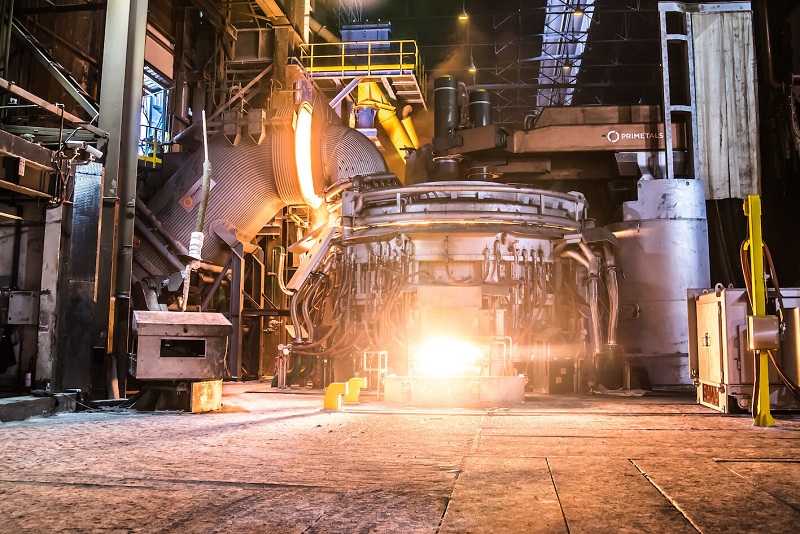
The motor movement used for automotive drive devices is usually composed of thin iron-silicon alloy steel plates superimposed, and its soft magnetic properties are crucial to the performance and efficiency of the drive device. Different from the requirements of stationary industrial motors, due to the higher speed, the electric drive system in the automotive industry adopts higher design standards, and the mechanical stress is mainly from the centrifugal force during operation. Therefore, the design of electrical steel is not entirely dependent on the magnetic properties, the appropriate combination of electromagnetic and mechanical properties is the key.
The purpose of this study was to analyze the fatigue life and fatigue crack initiation behavior of electrical steel plates under different edge conditions, and to compare the edge surfaces obtained by four different cutting methods, including polishing, wire cutting, laser cutting and shear cutting. The material under study is a fully machined non-oriented electrical steel plate with a nominal thickness of 270 µm.
The results of microstructure study and residual stress measurement show that the average surface roughness Ra of the wire-cut sample is about 0.16μm, and the edge surface of the polished sample is quite smooth (Ra = 0.01μm), while the laser cutting and shearing result in the uneven edge size and relatively high surface roughness of the geometry, 0.32μm and 0.91μm, respectively. Local high dislocation density due to plastic deformation. The shear edge exhibits the worst geometric accuracy and has a large area of higher local poor lattice orientation, where plastic deformation and corresponding mechanical strain hardening produce hardness values up to 6.0GPa. However, even for wire-cut or polished samples, several regions with high local lattice orientation differences can be seen concentrated directly below the cut edge, indicating slight strain in these regions.
Caused by rapid changes in temperature gradients along the cutting direction. At 90°, there is a slight residual compressive stress. For wire-cut and polished specimens, high residual compressive stresses can be obtained in the range of 0° and 90° due to the influence of the manufacturing process. In contrast, shearing results in a residual tensile stress of 0°, but its magnitude is not as high as that of the laser cut specimen.

The fatigue life tests of the stress controlled fatigue test with Rσ = 0.1 and the completely reversed (Rε = -1) strain controlled fatigue test illustrate the view that the shear specimen exhibits the lowest fatigue life under both control modes because the highly irregular surface with multiple micro-notch combined with strain hardening reduces the damage tolerance under fatigue load. Since all surface irregularities at the edges are removed, the polished specimen has the highest fatigue life. The fatigue life values of laser cut and polished specimens are very similar, although there are differences in roughness and residual stress states. For wire-cut edges, the fatigue life is reduced during stress control fatigue tests. Due to the existence of defects, especially surface pits, the crack nucleation time is shortened. However, for strain controlled fatigue tests, the differences between polished, wire-cut and laser-cut samples were very small, so there was no clear trend.
In grains with high SF, incompatible stresses at the interface (grain boundary or triple point) can result, leading to the accumulation of dislocations. When the local stress exceeds the grain boundary strength, an intergranular crack occurs. This is the reason why wire-cut, laser-cut and polished specimens have similar fatigue lives, especially at low cycle fatigue. If the surface is sufficiently smooth, the microscopic process of dislocations accumulating at the grain boundary until fatigue crack initiation requires a similar cycle cycle. Therefore, the strain control fatigue test under low cycle fatigue is relatively independent of the surface conditions. This further indicates that the main fatigue mechanism of strain control test is based on the interaction between grains caused by intergranular crack initiation at low cycle fatigue state.
For the stress control fatigue test under high cycle fatigue, the difference of roughness and residual stress state will affect the fatigue life more significantly. Due to the low amount of plastic deformation under high cycle fatigue loading, surface conditions such as roughness and micro-notch are more important. In contrast, the residual stress state did not seem to have a significant effect, such as small differences between laser cut and polished samples.
Electrical steel industry analysis
2023-11-20Buying Stainless Steel Cookware? Read this First(1)
2023-07-17Building curtain wall-316L low carbon stainless steel
2021-08-09Types of stainless steel plates
2021-04-29What are the advantages of stainless steel flower pots?
2022-08-16Types Of Transformer
2023-02-15






